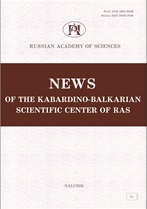|
This article is cited in 2 scientific papers (total in 2 papers)
Information Technologies and Telecommunications
Formation of dynamic cause-and-effect relationships when controlling
the behavior of an intelligent agent based
on the multi-agent neurocognitive architectures formalism
I. A. Pshenokovaab, O. V. Nagoevaa, A. Z. Apsheva, A. Z. Enesa
a Institute of Computer Science and Problems of Regional Management –
branch of Kabardino-Balkarian Scientific Center of the Russian Academy of Sciences,
360000, Russia, Nalchik, 37-a I. Armand street
b Kabardino-Balkarian Scientific Center of the Russian Academy of Sciences,
360010, Russia, Nalchik, 2 Balkarov street
Abstract:
Promising intelligent decision-making systems should ensure the construction of
cause-and-effect relationships between events under conditions of uncertainty associated with
unreliable and incomplete knowledge, leading to the inability to predict the exact consequences of the
decision taken with a variety of choices. In such cases, it is very important to take into account the
correlation between cause and effect. It is known that the basis of the causal inference is the
representation of all possible alternative scenarios, which allows to plan and manipulate actions in the
decision-making process. The paper presents a simulation model for the formation of dynamic
cause-and-effect relationships to control the behavior of an autonomous intelligent agent based
on neurocognitive architectures. The multi-actor structure of event-type agneurons and the process
of formation of cause-and-effect dependencies by concluding or terminating multi-agent contracts
are considered. An experiment was conducted to train an autonomous intelligent agent, to predict
the consequences of various actions in the current circumstances.
Keywords:
intelligent agent, causation, correlation, multi-agent systems, neurocognitive architecture.
Received: 09.08.2022
Revised: 15.09.2022
Accepted: 20.09.2022
Citation:
I. A. Pshenokova, O. V. Nagoeva, A. Z. Apshev, A. Z. Enes, “Formation of dynamic cause-and-effect relationships when controlling
the behavior of an intelligent agent based
on the multi-agent neurocognitive architectures formalism”, News of the Kabardino-Balkarian Scientific Center of the Russian Academy of Sciences, 2022, no. 5, 73–80
Linking options:
https://www.mathnet.ru/eng/izkab505 https://www.mathnet.ru/eng/izkab/y2022/i5/p73
|


| Statistics & downloads: |
| Abstract page: | 39 | | Full-text PDF : | 32 | | References: | 18 |
|



 Contact us:
Contact us: Terms of Use
Terms of Use
 Registration to the website
Registration to the website Logotypes
Logotypes